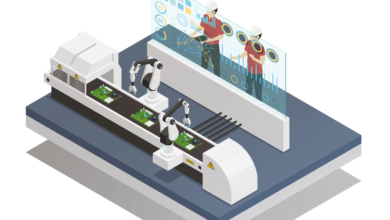9 Things to Consider When Designing a Strategic Network

A supply chain evolves over time. New production facilities are opened to meet the needs of the day, regional distribution centers are used in addition to factory warehouses, and new inventory and transportation management decisions are made.
Managing a supply chain requires significant effort, and delays, shortages, and quality issues are inevitable when distributing to customers. Therefore, many companies feel the need to rethink their supply chains by conducting strategic network design and network optimization to better serve customer needs or control costs.
What is Strategic Network Design?
Network design is the organization of flows consisting of suppliers, customers, logistics, and production facilities to achieve the most efficient outcome for the production and distribution of goods. Network design attempts to answer questions such as where raw materials will be sourced from, how products can be distributed, where they can be stored, and how they can be delivered to customers. Network design refers to the process of establishing and optimizing a mathematical model of the supply chain using various methods such as algorithms, intuitive approaches, and linear programming.
Key Points in Network Design
Network design differs from traditional planning methods that aim for the lowest product cost and just-in-time delivery. Since it analyzes and affects the entire supply chain of a business, network design efforts need to be professionally and systematically managed. This method considers many factors such as selecting the most accurate modeling technique to capture the real performance of the business, its goals, and costs. Here are nine important factors to consider:
- Define Goals and Challenges, Obtain Management Support
The business must have a clear idea of what it aims to achieve with such a project. Also, it’s crucial to inform decision-makers accurately about the time, effort, and cost required for such a project. Network design is not an application that can be conducted in isolation from other departments; it requires a joint project team with support from procurement, production, sales, logistics departments, and even IT. CEO support and involvement are vital to overcome challenges. A pilot project may be needed to demonstrate the benefits of network design.
- Assemble a Strong Network Design Team
One of the most important things to do for good network design is to assemble a team with the necessary skills, stability, and consistency to complete the project. At least, there should be a full-time project leader and a small project team consisting of individuals who collectively understand the supply chain, organization, and what they aim to achieve. Senior executives with decision-making authority and experts from other departments should be involved when necessary.
- Select the Right Modeling Tool and Consultant
Only a few companies have in-house experts with the modeling and optimization skills required for such a project. You’ll likely need external consultants or a modeling software provider. Various modeling software is available for supply chain network optimization. Some software works on desktops or in the cloud. Some are industry-specific and can be used with relatively little preparation, but they may not effectively model all supply chains. Using optimization engines directly is a powerful and flexible approach but often requires advanced coding skills. Some use drag-and-drop modeling to simplify mathematical modeling, making configuration easier.
- Define the Current Supply Chain Network
The first thing to do is to define the current supply chain network in detail. This is an important and time-consuming step. The amount of detail required may vary depending on the type of analysis you are conducting, but working with as much detail as possible will always be useful in reducing errors. This will help you make fewer mistakes. Typical data needed for the project include product, supplier, customer, and facility locations, costs, distances, as well as constraints such as shipping method and capacity, delivery time. Start with products and demands. Most of the information you need will be in your material requirements planning (MRP) and enterprise resource planning (ERP) systems.
- Model the Supply Chain
All the definitions obtained in the previous step are transferred to modeling software for network optimization. This creates a detailed mathematical model of the supply chain. This is where you start to see the benefits of drag-and-drop modeling. It takes less time to create this model and can be used by all employees without requiring training. The team approach helps speed up model preparation.
- Feed Data into the Supply Chain Network Model
After defining and modeling the supply chain network, the third most important step is data preparation. Many businesses have abundant data. However, additional data sources may need to be identified and obtained, especially regarding forecasts and future market trends. This data needs to be cleaned and filtered using filtering techniques. Once the data is prepared, it is loaded into the model.
- Validate the Model
You need to validate the supply chain model you have created. Depending on how it was prepared, the impact of some rules governing the model may not be readily apparent. Therefore, it is best to apply past historical data as a scenario and compare the model output with known past results. There are two important points in validating the model. The model should be able to predict what will happen in the future for known inputs. Additionally, the model needs to be calibrated to achieve similar values in terms of financial figures and volumes. These two important steps create trust and credibility in the model.
- Compare Scenarios and Make Decisions
At this point, the model is available to make decisions regarding network design and to test future scenarios (what-if). The model must reflect the real world. The next step is to use optimization solvers and network optimization programs to run multiple scenarios simultaneously to find the best outcomes. For example, determining the best production facility for producing a certain product or where a retailer wanting to speed up delivery times should open warehouses.
- Embed Skills and Experience Permanently
Strategic network design and network optimization activities should be continuous rather than one-time actions. For this, it is essential for businesses to internalize the skills and knowledge needed to periodically





